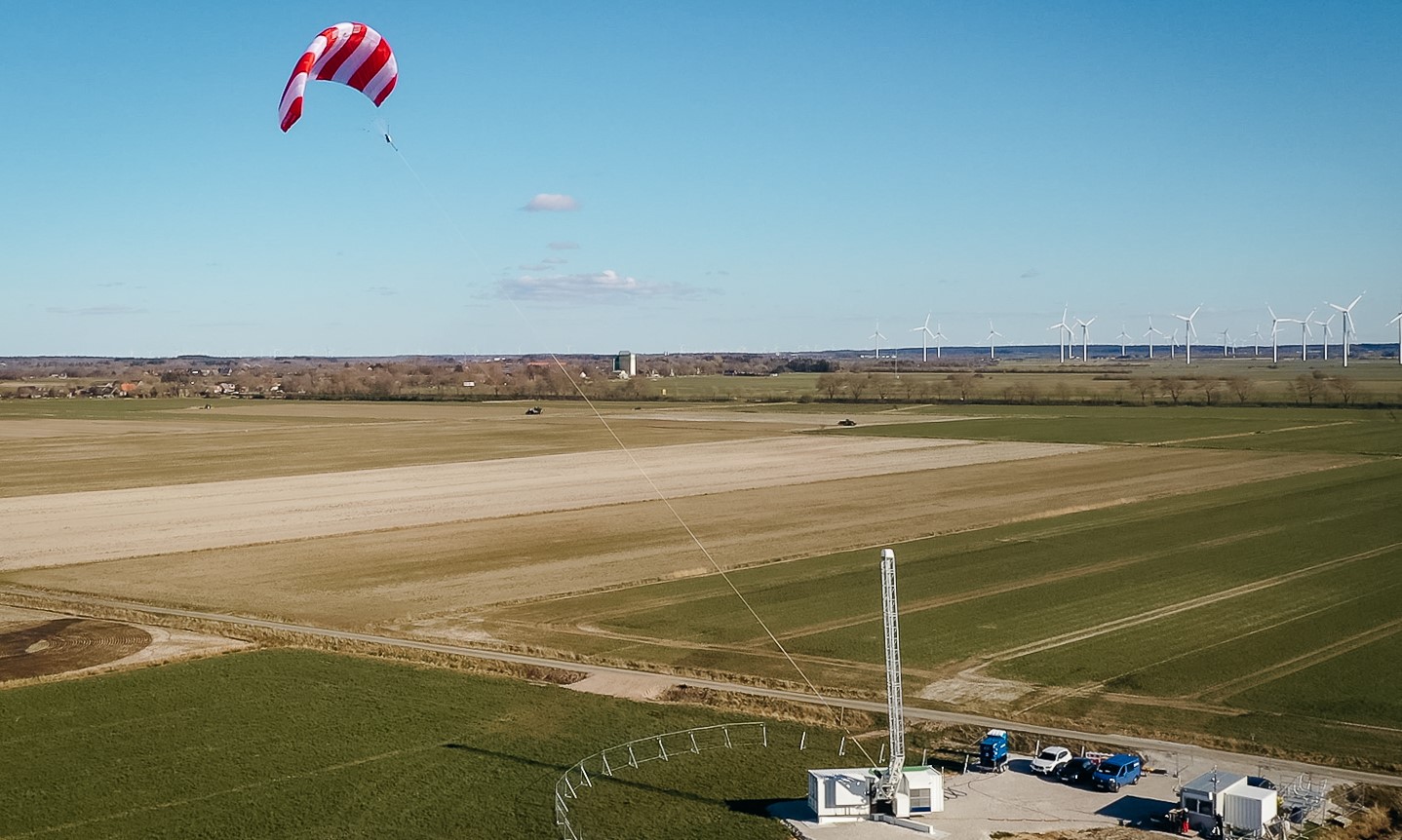Wind-power for cranes – a construction game changer?
Wind energy, a clean and renewable resource, is emerging as a game-changer for the construction industry – with innovations that continue to surprise. By harnessing the power of the wind, construction companies are reducing their environmental impact, improving efficiency and contributing to a more sustainable future – but there is much more to it than that – writes John Ridgeway.
Check out for starters the impact being made by the SkySails Traction Kite System, a revolutionary technology, developed in Hamburg, Germany, that uses wind power to assist cranes in lifting heavy loads. A link to the video, showing this in action is available at the bottom of the page.
The SkySails system consists of a high-performance kite, a launch and landing mast and a winch connected to the crane. The lightweight kite is tethered to the winch and strategically positioned using an autopilot system. As the wind fills the kite, it generates lift, pulling on the tether and assisting the crane in lifting loads.
By harnessing wind power, the SkySails system reduces the amount of energy required by the crane's main engine. In short, this translates to lower reliance on fossil fuels leading to significant reductions in CO2 emissions and a smaller environmental footprint for construction projects.

Less fuel consumption in turn, means lower operating costs for construction companies. The kite's pulling force can also extend the crane's lifting capacity, allowing for the handling of heavier loads or reaching greater heights.
The system has been successfully used in Germany where SkySails collaborated with construction company Hochtief on a high-rise project in Hamburg. The “Kite” assisted in lifting prefabricated concrete slabs, reducing crane energy consumption by up to 30%. Another successful project involved lifting heavy components during the construction of the JadeWeser Bridge in Wilhelmshaven, Germany.
The SkySails Traction Kite System is a promising innovation with the potential to significantly impact the construction industry. As the technology matures and becomes more widely adopted, we can expect to see its application on various construction projects, contributing to a more sustainable and energy-efficient future for the built environment – but this is just for starters.
Wind energy offers a multitude of benefits for the construction industry, making it a compelling choice for environmentally conscious builders. Fossil fuels for powering cranes, generators and other equipment are a major source of emissions in construction. Wind power offers a clean alternative, significantly reducing greenhouse gas emissions and the overall carbon footprint of projects.
Wind-powered generators are providing a reliable and stable source of electricity, reducing the risk of power outages and disruptions that can compromise safety on construction sites. Wind turbines can be strategically placed on construction sites to generate clean electricity for powering equipment, lighting, and temporary worker facilities. This approach reduces reliance on the grid and minimises emissions. However, it is still early days and while the use of wind energy in construction is still evolving, there are promising advancements on the horizon.
As prefabricated construction continues to grow, on-site wind power generation could become more common. This would create a truly sustainable construction model, minimising waste. As wind turbine technology continues to improve, their efficiency and affordability will also increase, making them even more attractive for construction applications.
Smaller, portable wind turbines specifically designed for construction sites could become more readily available, offering a flexible and scalable solution for on-site power generation.
However, while wind energy offers a powerful solution, a comprehensive approach to sustainable construction requires exploring other avenues, which should also include the use of recycled materials, low-carbon building products and bio-based alternatives, that together can significantly reduce the embodied carbon footprint of buildings.
Despite the exciting possibilities, embracing wind power and broader sustainability practices in construction comes with challenges. Wind-powered technologies and sustainable materials often have higher upfront costs compared to conventional solutions. Incentives and financing mechanisms are needed to bridge this gap and encourage wider adoption.
The construction industry workforce might also require additional training and upskilling to effectively implement wind-powered technologies and sustainable construction practices. It is all about changing mindsets, shifting from traditional, cost-centric approaches to a life cycle perspective that considers both upfront costs and long-term environmental benefits. These challenges can be overcome through a collaborative effort involving policymakers, industry leaders, educational institutions and the workforce itself.
Harnessing the power of wind is a significant first step towards a sustainable construction industry. However, it's part of a larger movement towards responsible building practices. The construction industry has the power to shape the future of our cities and infrastructure. By embracing wind power and other sustainable solutions, we can create a built environment that is not only functional and aesthetically pleasing, but also environmentally responsible, leaving a positive legacy for generations to come.
Sources and Further Information:
- SkySails Website: The SkySails website provides detailed information about the technology, case studies, and the company's vision for sustainable construction. https://skysails-marine.com/
- See Video: https://skysails-power.com/med...
Additional Blogs

Why Precast Concrete is a Top Choice for 2026 Construction
Custom home construction requires building complex infrastructure that will last while staying within a reasonable budget. Precast concrete emerges as one of the best materials to utilize in your...
Read moreUtilities consultants: providing the vital support every construction project needs
The UK’s cost of living crisis is adding significant financial challenges for everyone across the built environment, not least property developers and builders. While utilities consultants can’t do...
Read more

Why cutting down trees will not solve the UK’s subsidence crisis
Across the UK, thousands of healthy, mature trees are being cut down each year in the name of protecting homes from subsidence. The issue is especially acute in the clay areas of southern England,...
Read more